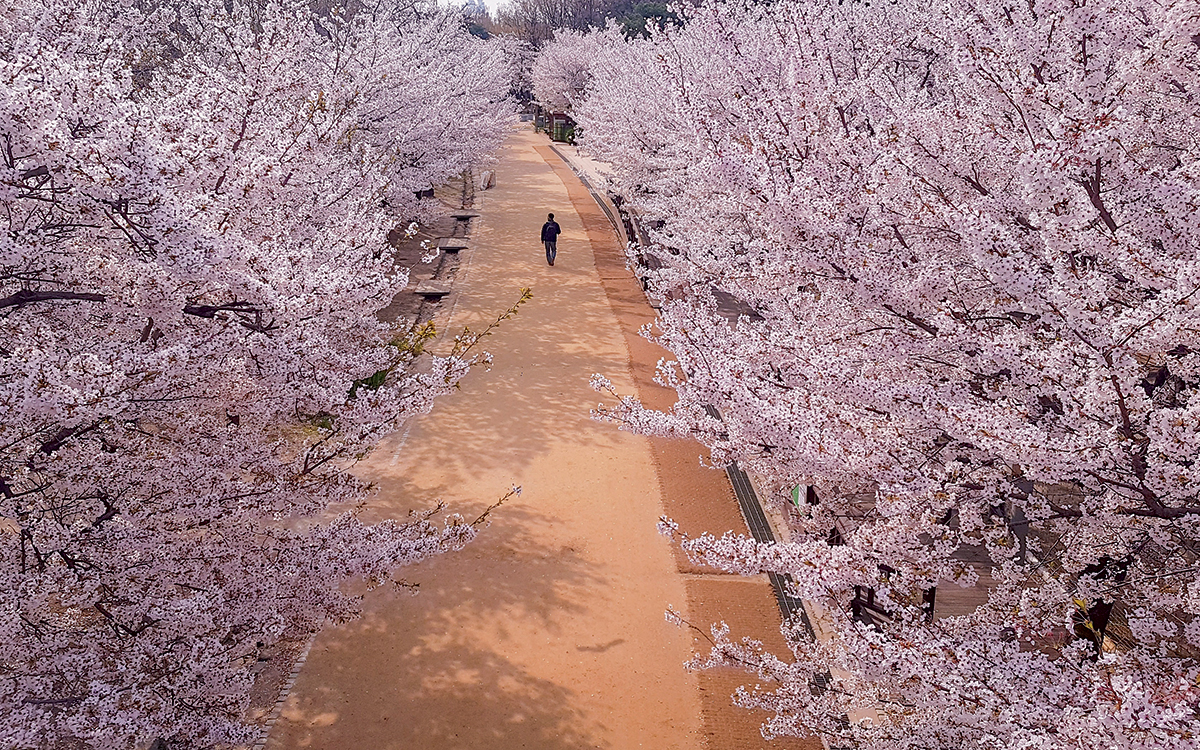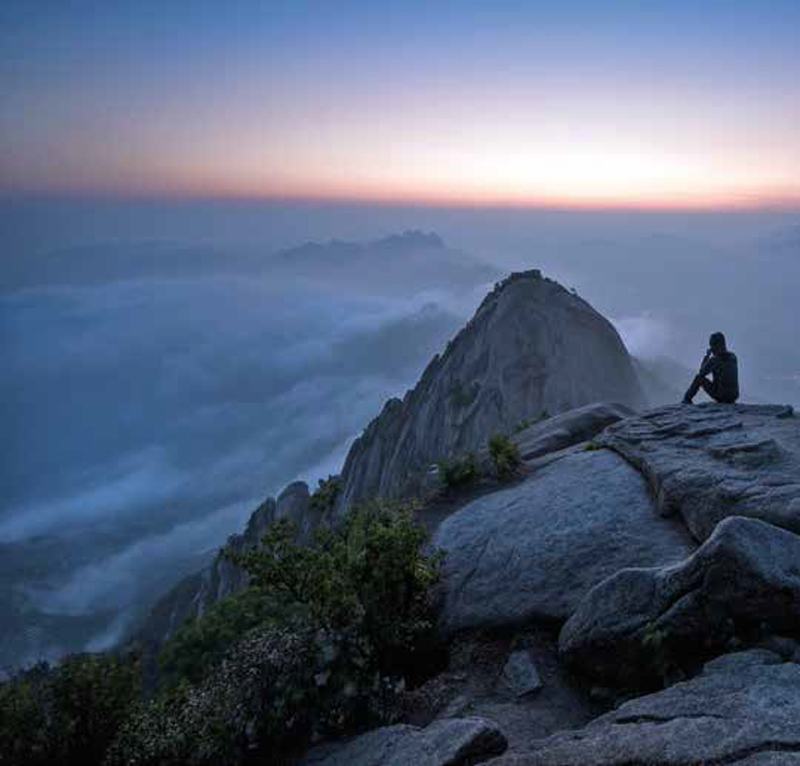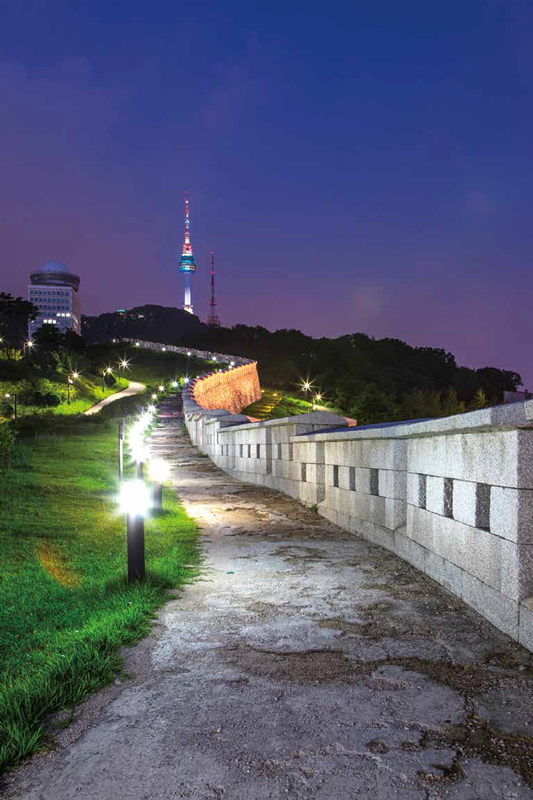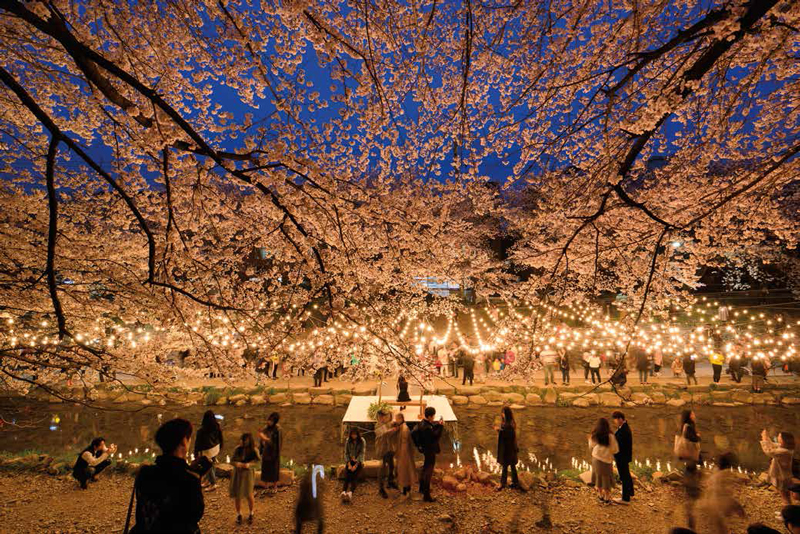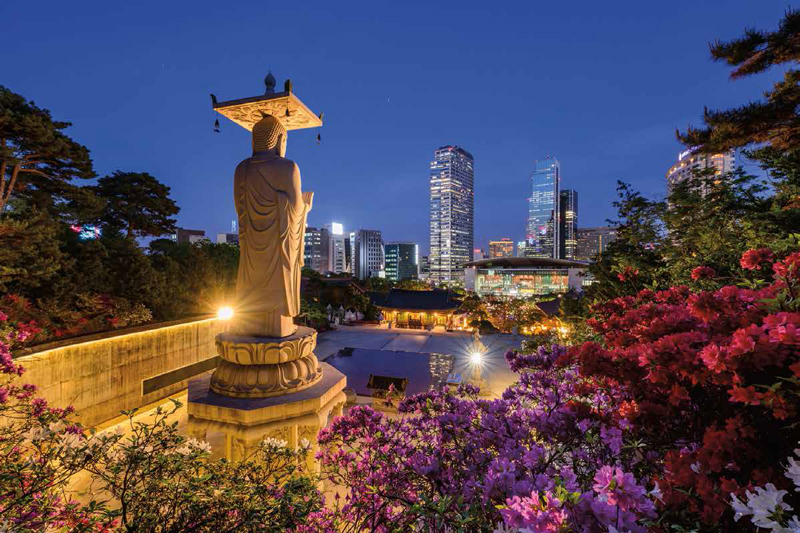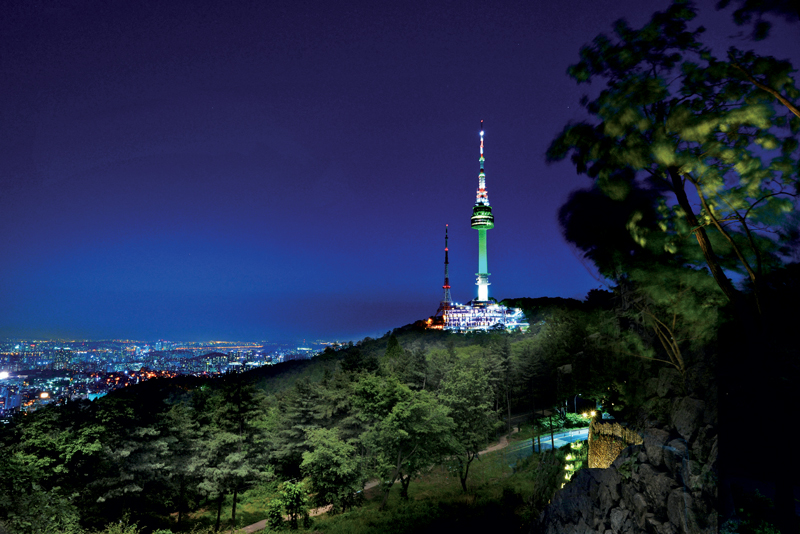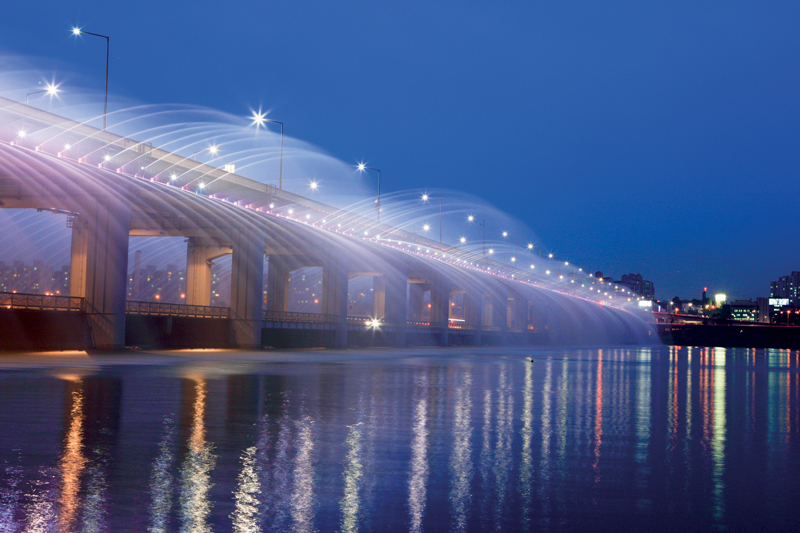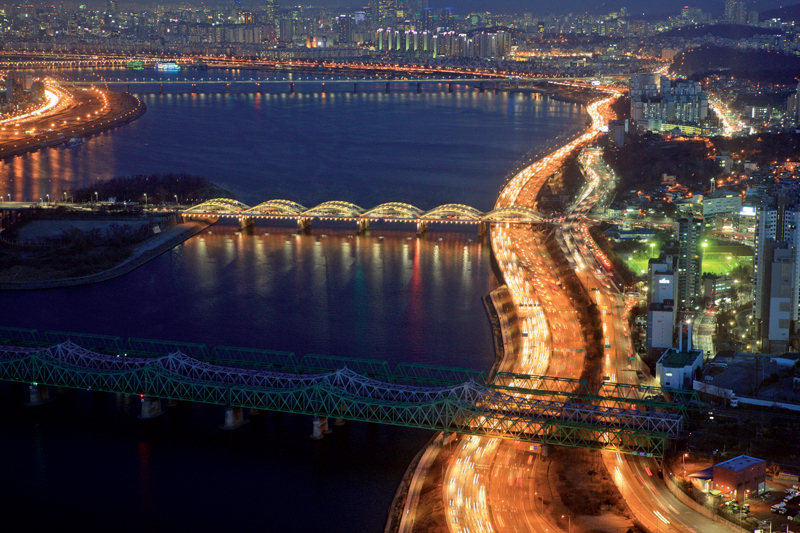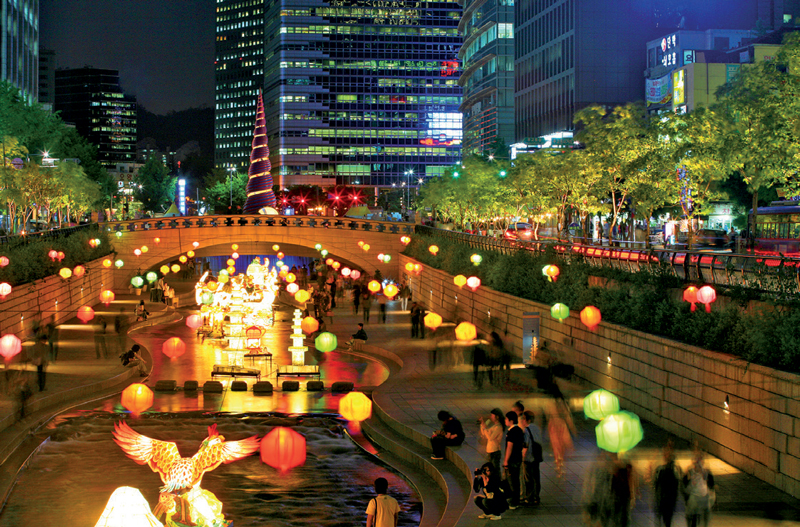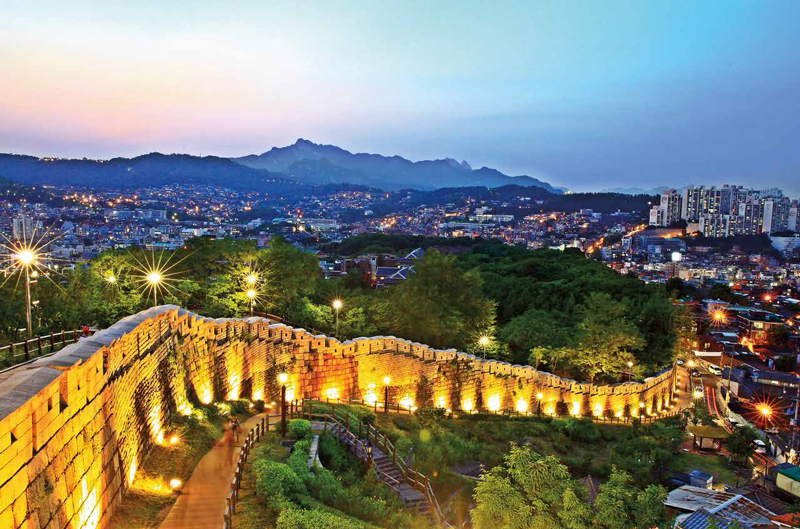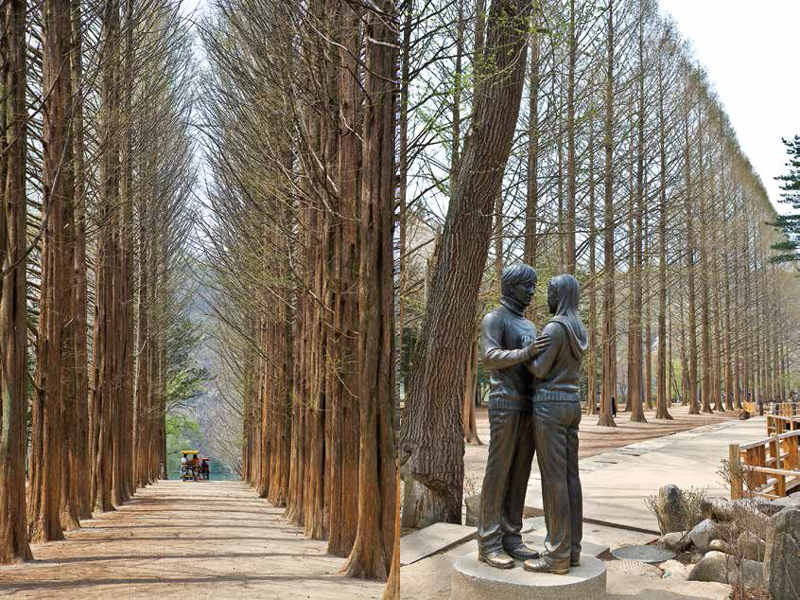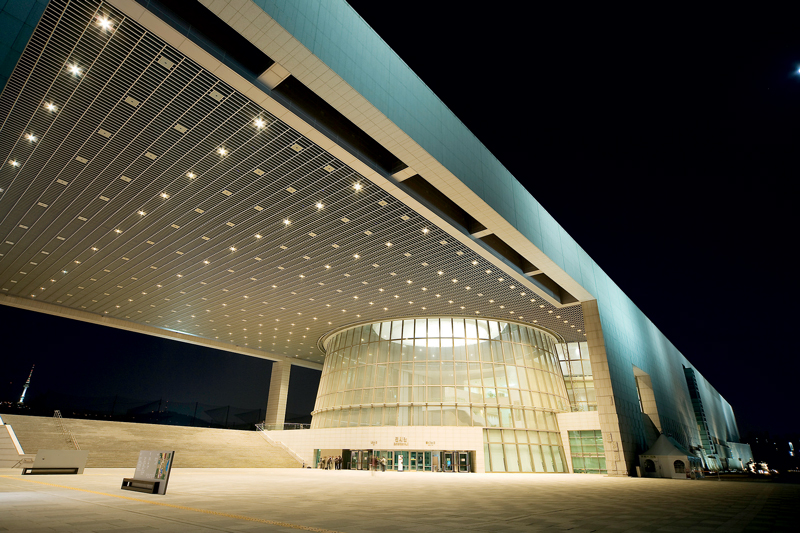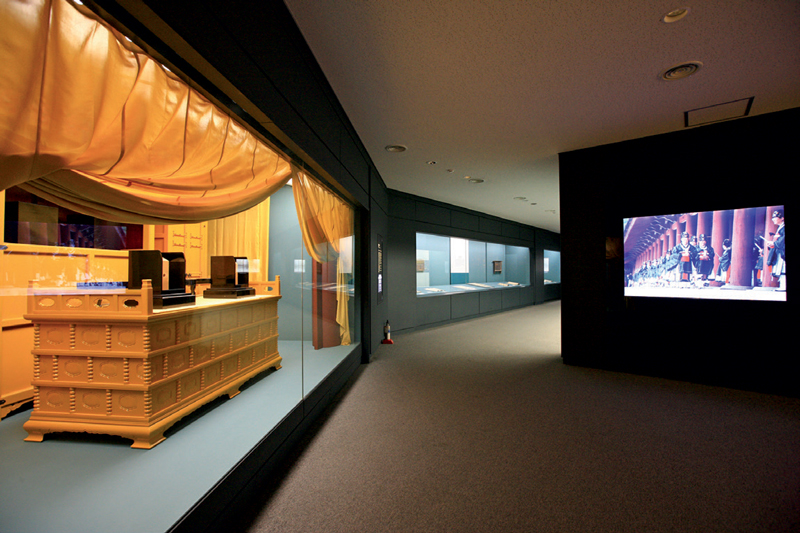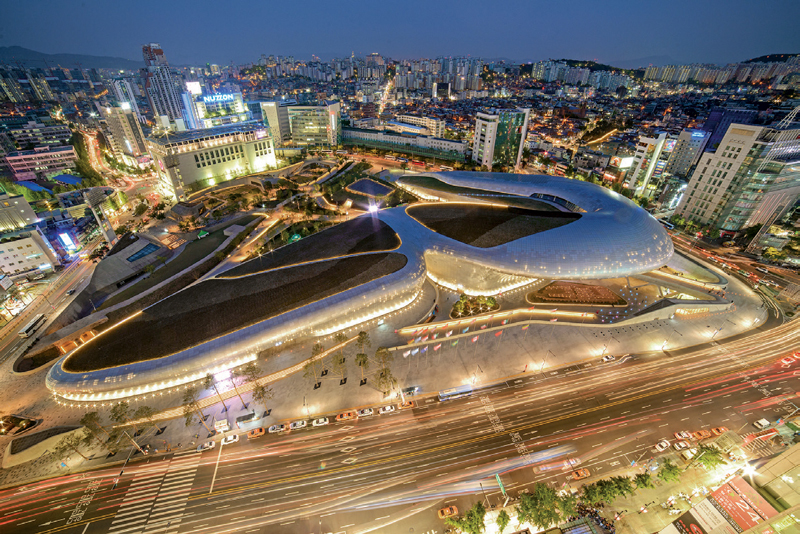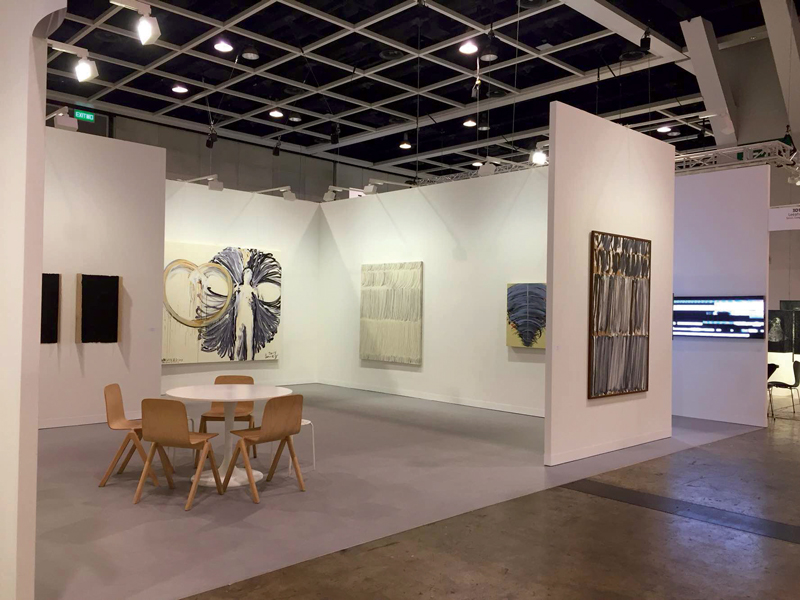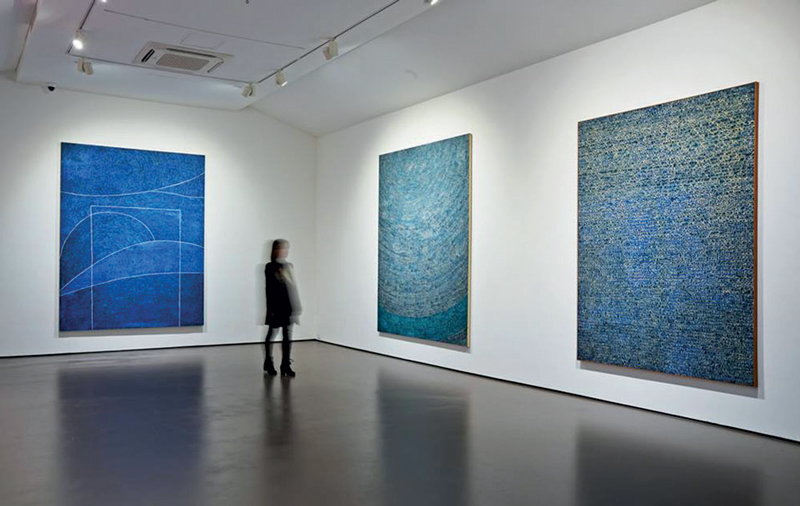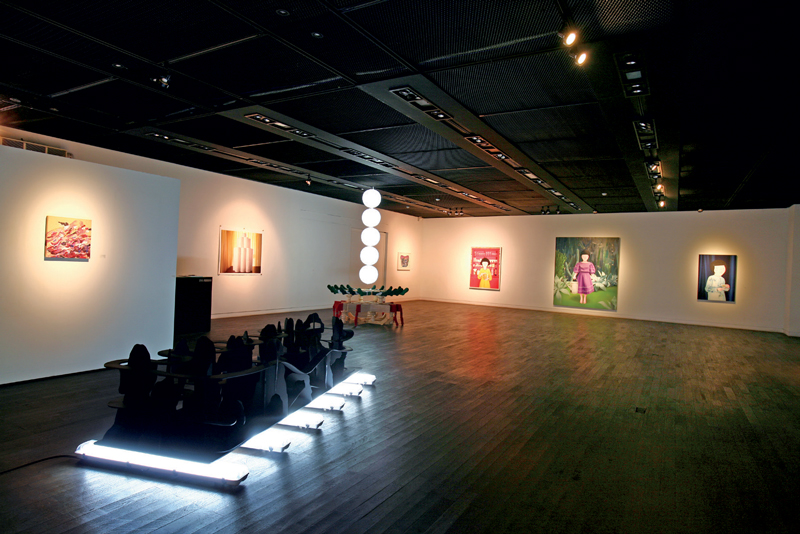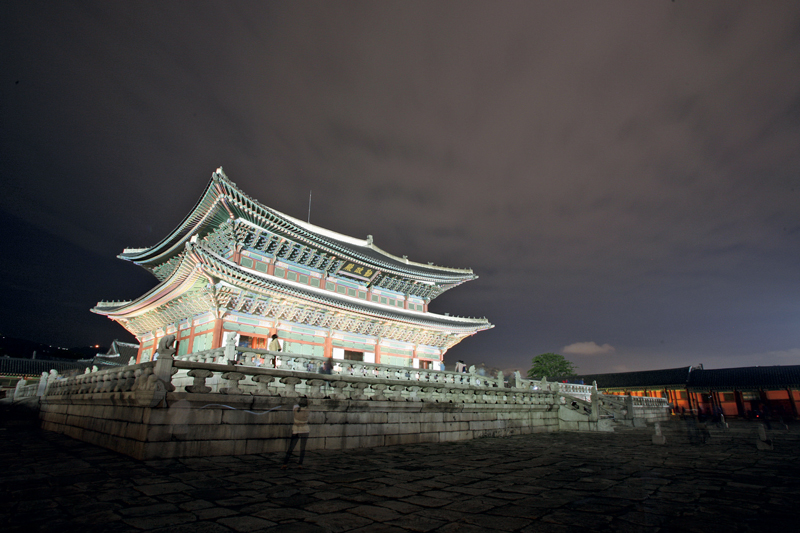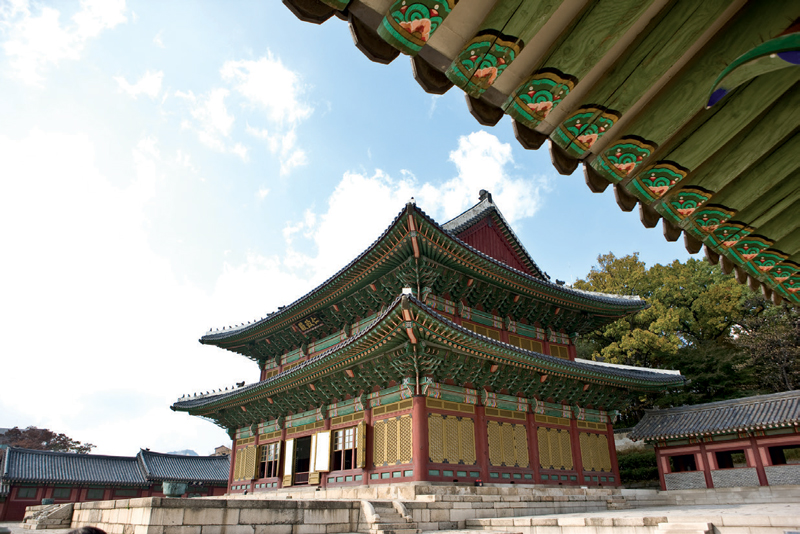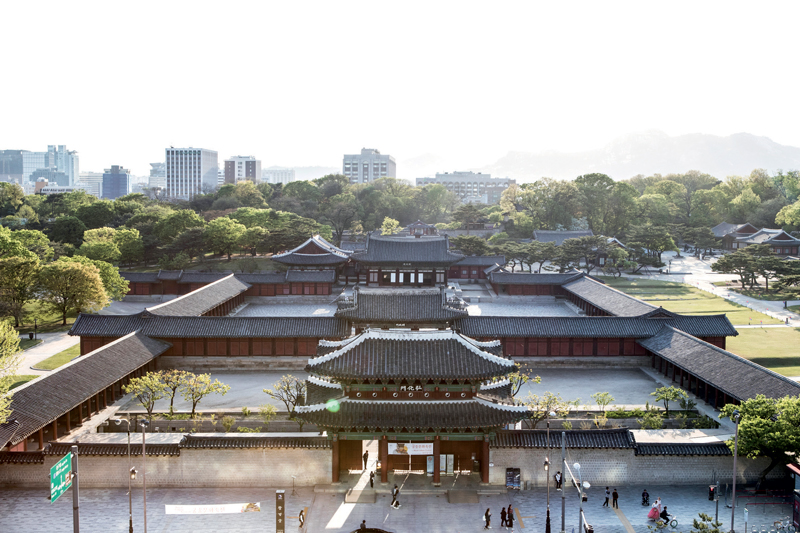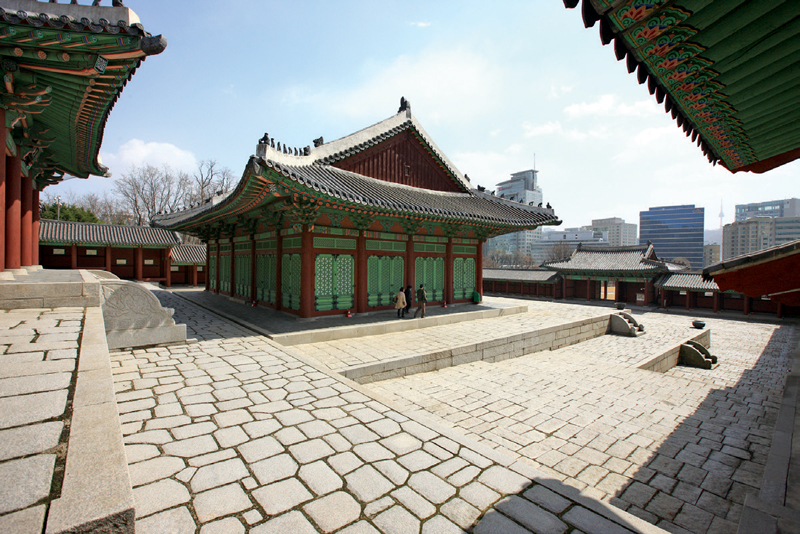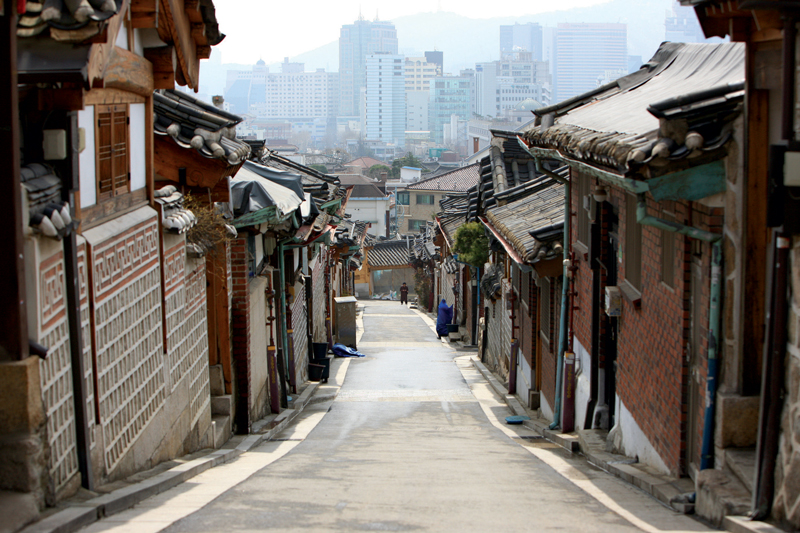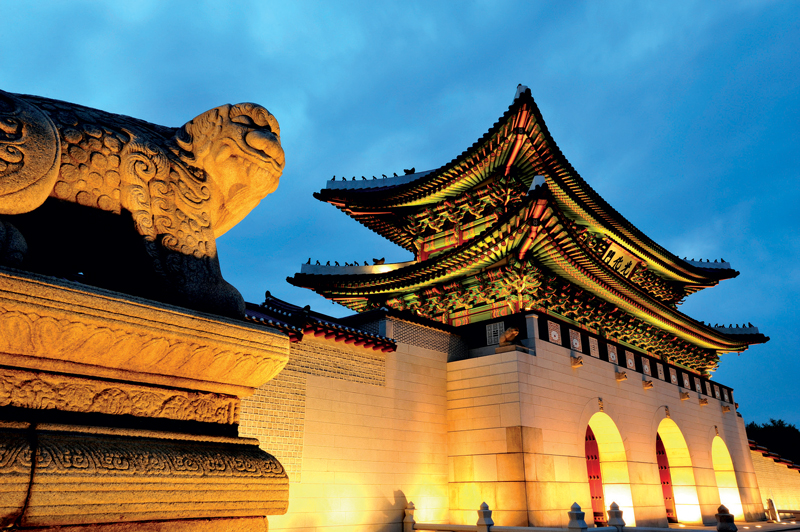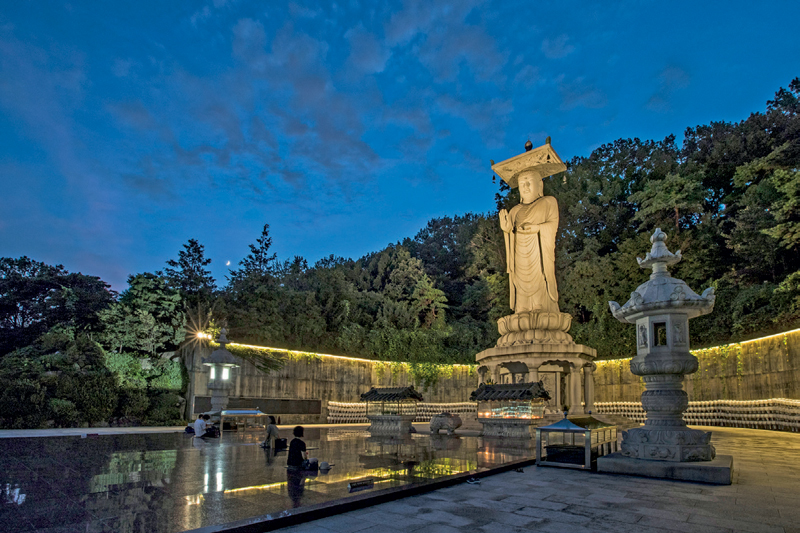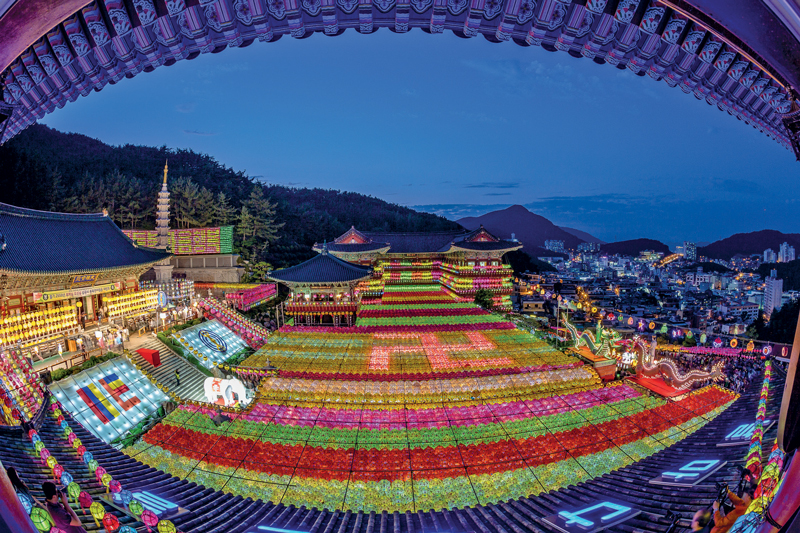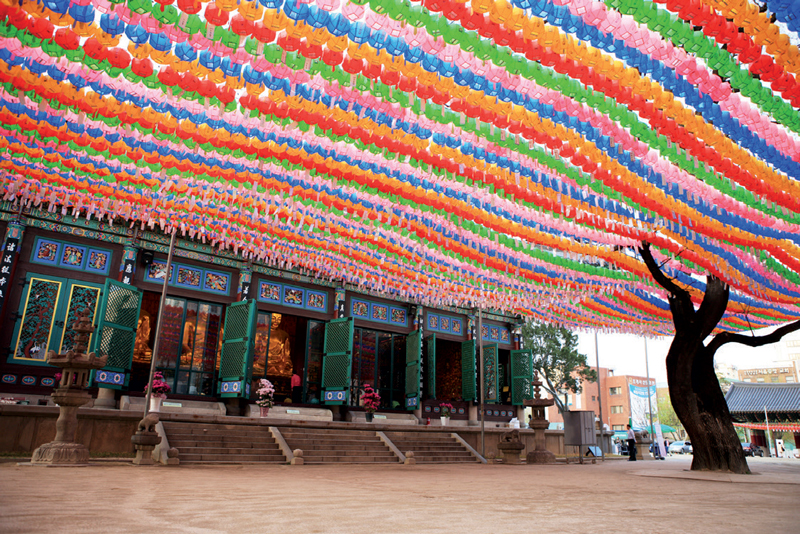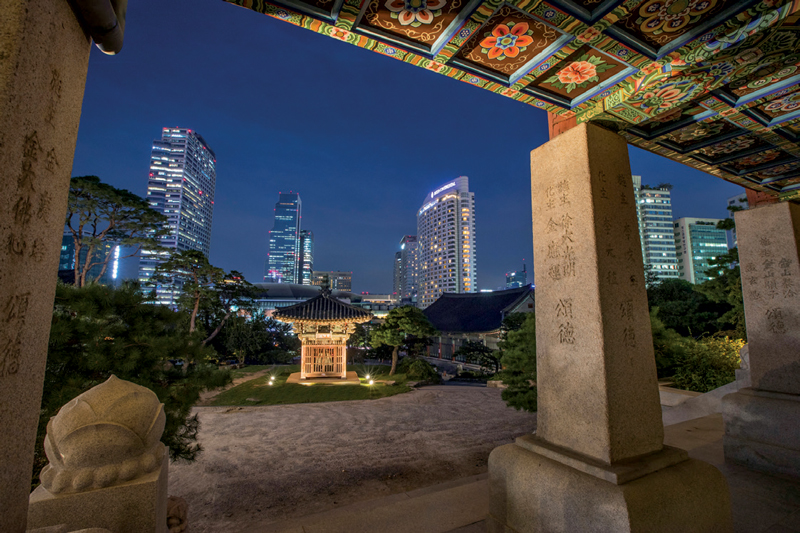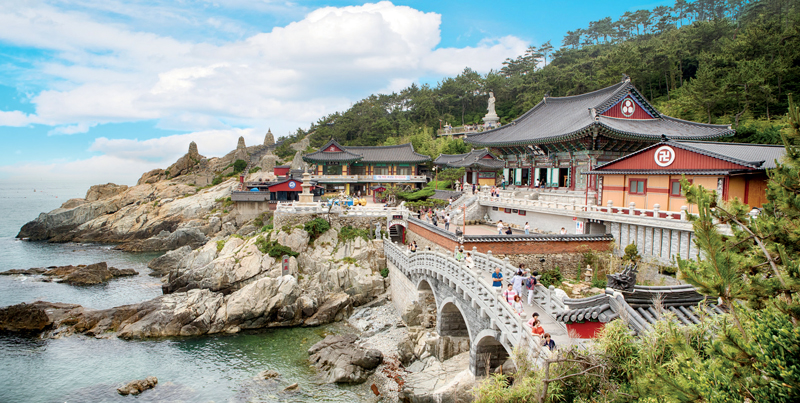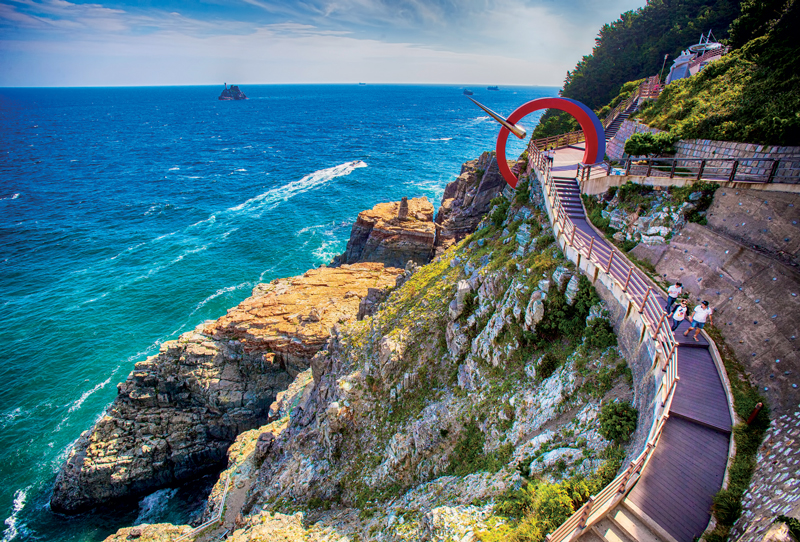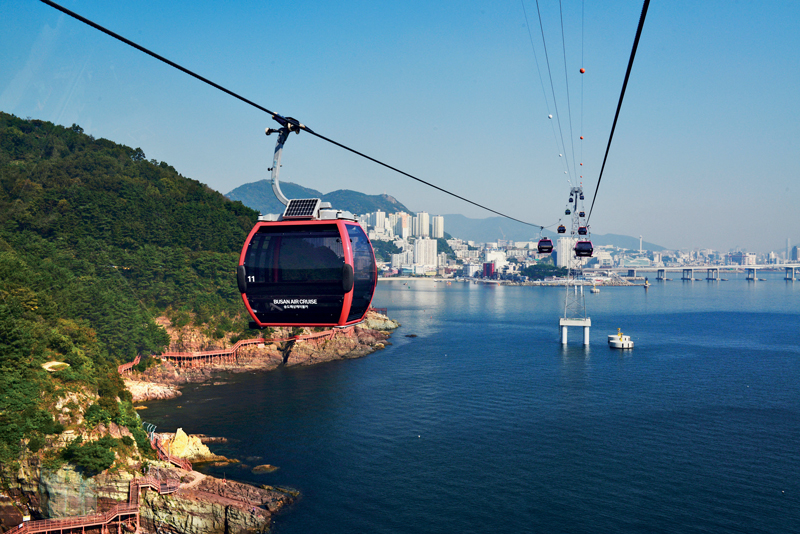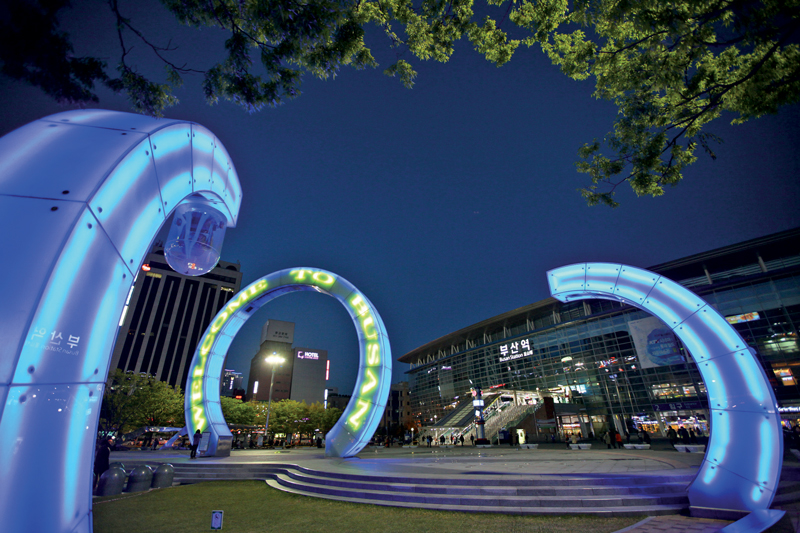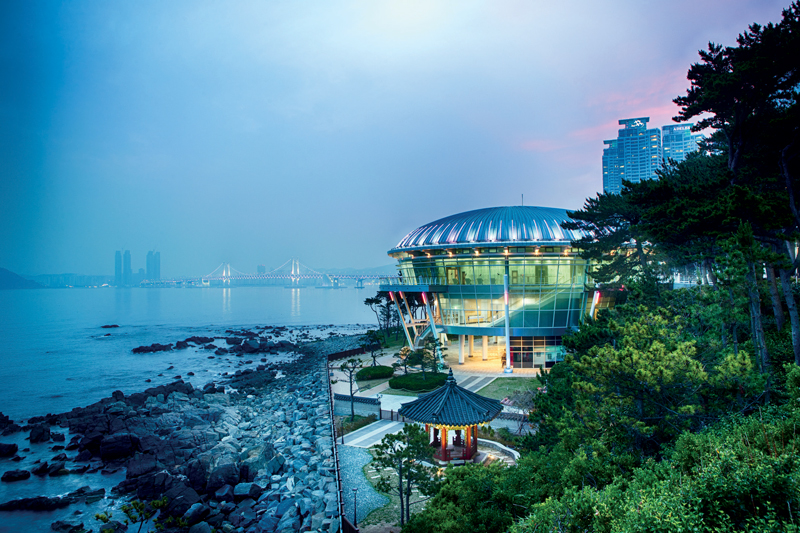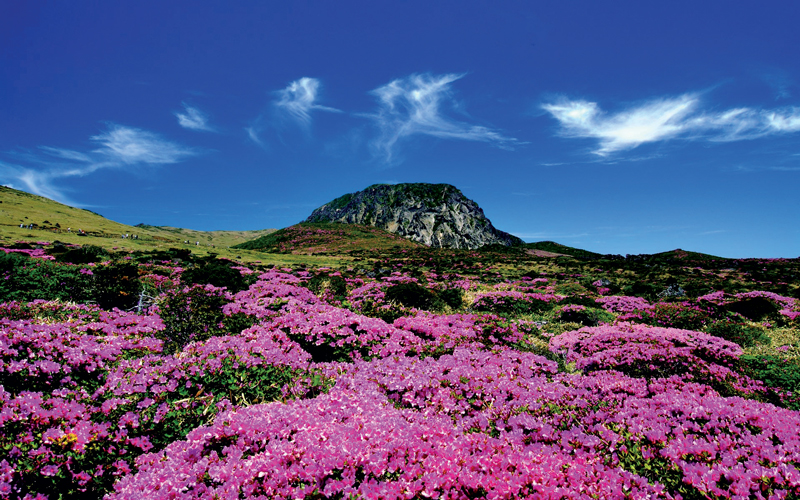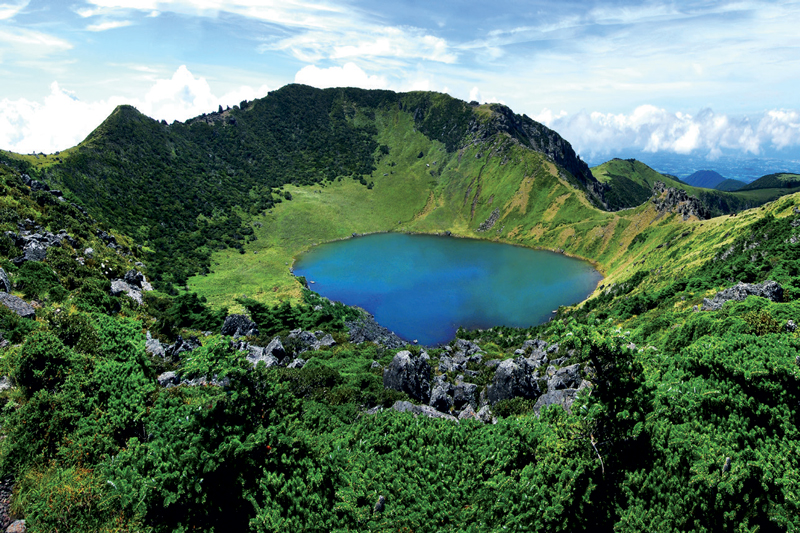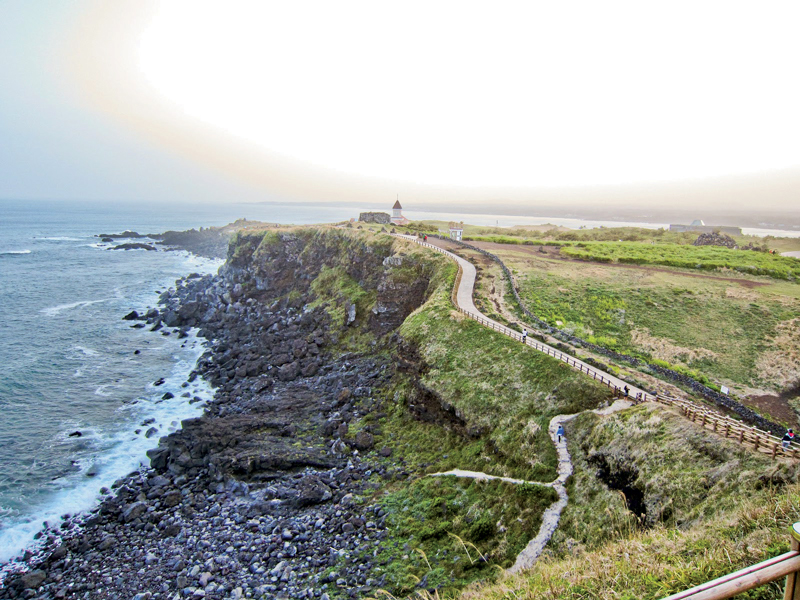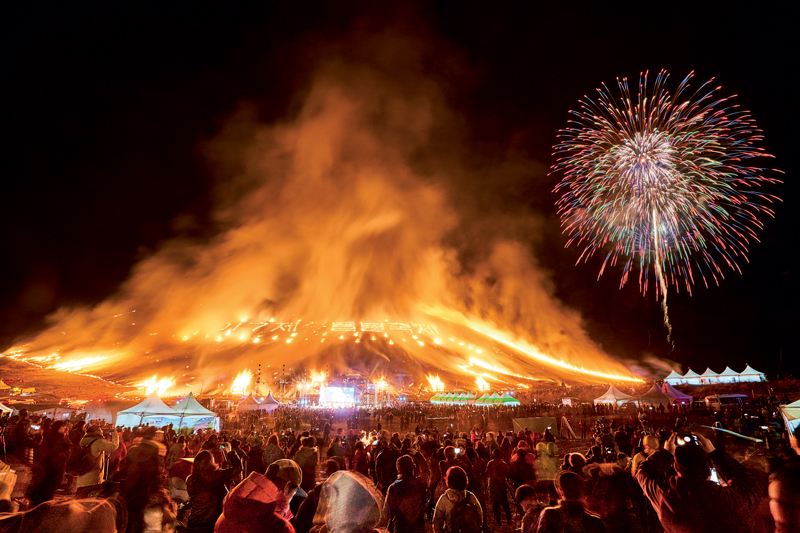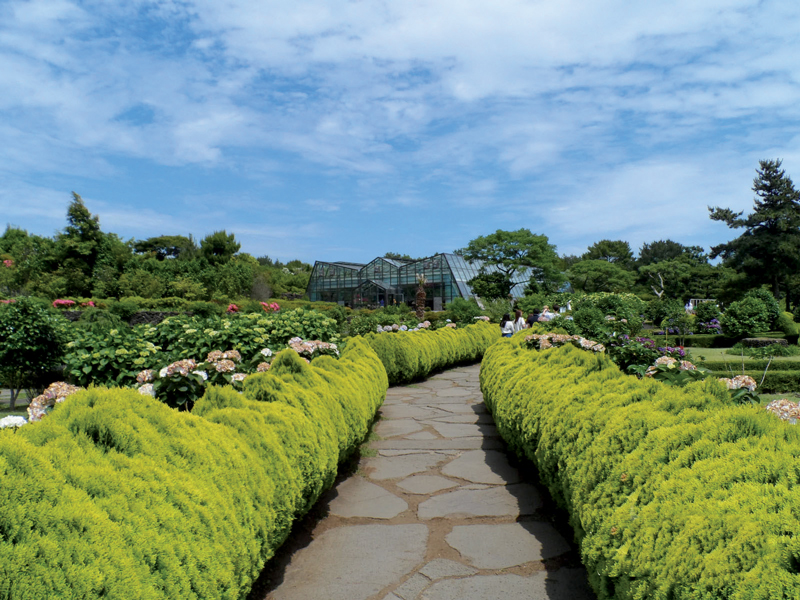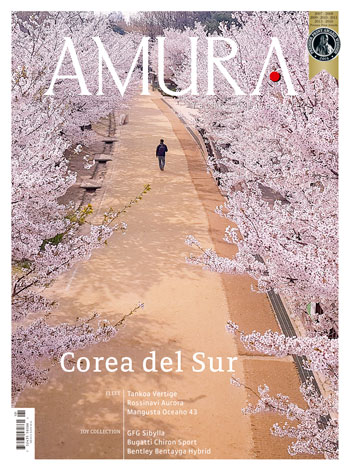A New Horizon for an Ancestral Tradition
Unified from three ancient kingdoms, South Korea (한국) has an incredible cultural heritage that can still be widely appreciated in its temples and arts despite its constant economy growth, thriving in the digital era which has positioned it as a world leader in science and technology. As a result, this country has become one of the most sought-out destinations for visitors around the globe. Its touristic offer covers a symphony of contrasts between urban luxury and peaceful natural landscapes; tropical hot spots and retreats to remote mountains; youthful artistic vision and thousand year-old temples; traditional dishes and exquisite international cuisine. Officially the Republic of Korea, this energetic territory will take you on unparalleled experiences and adventures.
SOUTH AND NORTH
Opposite and Divided
The Korean Peninsula is located in East Asia, extending southwards from continental Asia, between China and Japan, bordered by the Yellow Sea, the Sea of Japan and the East China Sea. Due to its strategic location, the territory has been subjected to numerous invasions since the first communities migrated from Central Asia, approximately 5000 years ago. The Korean territory as we know it today is a direct consequence of the colonialism that plagued the country in the 20th century; Japan invaded Korea and established a militarized rule system from 1910 to 1945.
This period ended after the Second World War and after Japan surrendered. The United States was to oversee the South and the Soviet Union the North—both of which stood leaderless—until elections could be held. The territory was ultimately and officially divided as a result of the Cold War; the now communist North invaded the South in 1950, and the Korean War ensued. The conflict involved the United Nations, the United States and the Commonwealth on the southern front, and the Soviet Union and China on the North. The war ended in 1953 when an armistice was signed, and North Korea and South Korea were consolidated as two separate nations.
The symbols in the South Korean flag (called Taegukgi) signify the four natural elements: water, fire, air and earth. The circle in the middle is based on Chinese ideology of the yin and the yang, and it represents balance and unity.
SEOUL
One of the Most Dynamic Cities of the World
Seoul, the capital of South Korea, has an appealing tourist offer for international travelers looking for riveting experiences. Visitors wander into the busiest streets of the city to relish in the joys of street food, which includes the renowned and traditional kimchi—prepared with fermented vegetables—, as well as noodles, barbecued beef, rice, seafood, all with flavors ranging from sweet to sour and spicy. The neighborhood of Insadong stands out for having the best street food, and for its cafés and tea shops; we recommend a visit to the Beautiful Tea Museum as well.
Gangnam District, made world-famous by K-Pop artist Psy, is also popular among tourists. It’s located south of the city by the River Han. Gangnam has a lively nightlife that keeps visitors up all night in clubs, bars and lounges, with artists playing from hip-hop and jazz to EDM. Gangnam is also home of one the largest shopping hubs in the country, with designer boutiques, shopping malls and underground shopping centers. A trip to the COEX Aquarium will treat visitors with over 650 species on display. North of Gangnam we find the Seonjeongneung burial grounds—a UNESCO World Heritage Site from the Joseon period.
On the neighboring district of Songpa, you will find Lotte World: a recreation complex comprised of a museum, a theme park, an ice-skating rink, a theater and a spa. Right next to it, the Seokchon Lake Park is popular among tourists and locals; it used to be part of River Han and now is divided into the East and West lakes, where numerous festivals are held, such as the Cherry Blossom Festival in spring and the Seokchon Lake Concert from April to November. Next to the East Lake, Café Street offers a good deal of coffee shops and bakeries.
The Banpo and Cheongdam Bridges cross the River Han towards downtown Seoul. They represent superb pieces of architecture, illuminated with different colors, and Banpo Bridge features the Moonlight Rainbow Fountain, programmed to play different shows along with lights, music, and 380 nozzles spraying water back into the river. Crowds often gather on the banks of River Han to appreciate the 1,140m long display between April and October.
Once at the core of Seoul, Myeongdong is the place to go shopping for fashion, souvenirs and entertainment; people from all over the world cram in the streets of Myeongdong with almost two million visitors per day. And of course, a visit to the N Seoul Tower is a must. You can enjoy a meal in one of its many restaurants or be captivated by the city panorama in the Observatory. The Tower is open every day of the year.
Other attractions include the Seoul International Fireworks Festival at Yeouido Hangang Park, and a trip to the Cheonggyecheon Stream, where people gather for different celebrations, art installations and entertainment. It hosts the annual Seoul Lantern Festival in November, and for 2017, the festival featured Olympic-themed lanterns. For those who love hiking, the Seoul City Wall, originally built in 1396 in times of the Joseon Dynasty, spans the Bugaksan, Naksan, Namsan, and Inwangsan mountains. Seoraksan National Park is also a great place for hiking tours and getting away from the busy streets of the city. Seoul also has a variety of parks where nature lovers can find a connection with the environment and appreciate the trees in full bloom. Seoul Grand Park in Gyeonggi Province—which surrounds the city, covers an area of 9,157,000㎡, and features hiking trails, a Zoo, the Rose Garden, the Botanical Garden and the Children’s Grand Park.
Nami Island, where a stroll through the lovely sceneries will be perfect for the romantics, is two hours away from Seoul in the Gapyeong County. The half-moon shaped island is often used as a filming location for the popular Korean dramas. In Gapyeong you can also find the Garden of Morning Calm, the theme park Petite France, Namiseom Island and the Yongchu Falls.
MUSEUMS
THE NATIONAL MUSEUM OF KOREA
LEEUM, SAMSUNG MUSEUM OF ART
NATIONAL PALACE MUSEUM OF KOREA
NATIONAL FOLK MUSEUM
NATIONAL MUSEUM OF KOREAN
CONTEMPORARY HISTORY
BANK OF KOREA MUSEUM
DONGDAEMUN DESIGN PLAZA
IKSAN JEWELRY MUSEUM
ALIVE MUSEUM
GALLERIES
GALLERY HYUNDAI
PKM GALLERY
GALLERY FACTORY
LEEAHN GALLERY
SARUBIA GALLERY
ARTSIDE GALLERY
GALLERY YEH
GANA ART
THE COLUMNS GALLERY
THE FIVE GRAND PALACES OF SEOUL
As part of South Korea’s historical past and artistic heritage, the Five Grand Palaces of Seoul from the Joseon period were reconstructed in the 20th century after repeated wars destroyed the original structures, built between 1300 and1500. Now tourists can visit all five palaces to get immersed in the lost kingdom from centuries past, and learn their history from the exhibitions in the museums, galleries and representations on these ancient sites.
1. GYEONGBOKGUNG
Palace Greatly Blessed by Heaven
- It was the first one to be built—in 1395—and remains the largest royal palace of the Joseon Dynasty.
- Here, visitors can experience The Royal Guard-Changing Ceremony.
- King Sejong the Great, Joseon Dynasty’s fourth ruler, created the Korean alphabet inside its walls between 1443 and 1444.
- The National Palace Museum of Korea and the National Folk Museum of Korea are inside the palace’s grounds.
- Tourists must make a reservation to visit the Gyeonghoeru Pavilion.
2. CHANGDEOKGUNG
Palace of Prospering Virtue
- Changdeokgung was the second palace, built in 1405.
- Out of the five royal palaces, Changdeokgung is the only one UNESCO proclaimed as World Heritage.
- It’s the best preserved and possesses the largest percentage of original structures as opposed to reconstructions.
- It’s known for its secret gardens, ponds and abundant flora, especially beautiful in full bloom.
3. CHANGGYEONGGUNG
Palace of Prospering Virtue
- This palace was built by King Sejong to honor his father King Taejong.
- It was built in 1483.
- Changgyeonggung stands right next to Changdeokgung Palace.
- Through the palace grounds, you can access the sacred Jongmyo Shrine.
4. DEOKSUGUNG
Palace of Virtuous Longevity
- Deoksugung became a royal palace in 1611, when King Gwanghaegun ascended to the throne.
- It stands out for its Western-style architecture.
- The Stonewall Walkway, the Yeongjegyo Bridge, Junghwajeon Hall, and the gardens are only a few of the sites of interest for visitors
- The Deoksugung National Museum of Art is located inside the grounds.
5. GYEONGHUIGUNG
Palace of Serene Harmony
- This is the most recent palace, built in the 1600s.
- Gyeonghuigung is the smallest of the Five Grand Palaces.
- Most of its grounds were lost throughout the centuries.
- Its reconstruction was concluded in 2002.
- You can find the Seoul Museum of History and the Seoul Museum of Art right next to the palace to learn more of its history.
BUKCHON HANOK VILLAGE
Bukchon Hanok is a traditional village located between Gyeongbokgung Palace, Changdeokgung Palace and the Jongmyo Shrine. In ancient times, the village was inhabited by nobility and government officials. Nowadays, this village represents one of the most intriguing locations for those who wish to experience the Joseon Dynasty at its purest. Visitors can find tea houses, eateries, cultural centers, shops, guesthouses and more. Because the environment is very traditional, visitors must take special care to be respectful of local customs, avoid loudness and litter.
THE EIGHT GATES OF SEOUL
1.SUKJEONGMUN GATE
2.SUNGNYEMUN GATE
3.CHANGUIMUN GATE
4.GWANGHUIMUN GATE
5.HEUNGINJIMUN GATE
6.DONUIMUN GATE
7.HYEHWAMUN GATE
8.SOUIMUN GATE
SOUTH KOREA TEMPLES
JOGYESA TEMPLE
BONGEUNSA TEMPLE
YONGHWASA TEMPLE
HAEDONG YONGGUNGSA TEMPLE
SAMGWANGSA TEMPLE
SUDEOKSA TEMPLE
DOSEONSA TEMPLE
BONGSEONSA TEMPLE
TAPSA TEMPLE
THE PORT CITY OF BUSAN
The Metropolitan City of Busan is South Korea’s second most important city, with thriving industries that include ship and car building, electronics and chemicals. Because it’s a coastal city, seafood restaurants, beaches and fish markets are prominent, but this edgy city also has an attractive nightlife, designer cafés and chic boutiques.
Busan is a port city surrounded by mountains; this presents great opportunities for visitors to engage in activities like Busan Air Cruise, to experience the urban landscape and the beaches in a different way through a network of cable cars that run from Songnim Park to Amnam Park. “Crystal cruising” on cable cars with transparent floors provides an even more exciting adventure. Amisan Nakdong River Observatory offers an opportunity to learn about the local natural habitats in the exhibition and information centers. Visitors can also watch migratory birds, sand castles and the perfect sunset from the observatory deck.
Busan is ideal for a relaxing day at the beach. The breathtaking white sand of Haeundae Beach is popular with both locals and foreigners because of its diverse selection of restaurants and pubs. Watersports are widely available and live performances light up the ambience during festival season. Taejongdae Natural Park is one of the best destinations in the city, not only because of its magnificent views of the blue ocean and the lush greenery, but because there is an adventure available for anyone: hiking up to the lighthouse, sailing, two temples, an observatory and even a sports park. Taejongdae offers many tours for families and couples, which include a cruising tour and the most recommended: a train course.
Another popular beach is Dadaepo, due to its white sand and the Dadaepo Sunset Fountain of Dreams located at the plaza. The fountain shoots water up to 55m in a choreographed dance of color to the rhythm of music from five genres. The 20-minute show is in display from April to October, every day except on Mondays.
The Nurimaru APEC House is located at the south end of Dongbaekseom Island, which is more of a peninsula, near Dongbaek Park. Visitors can take a tour in the surrounding forests or inside the facilities to appreciate the architecture and design while enjoying a splendid view toward the Sea of Japan. The Busan Fireworks Festival takes place in Gwangalli Beach every October, which can be appreciated with the magnificent Gwangandaegyo Bridge on the background. Jukdo Park also offers wonderful views and a relaxing beach experience.
In downtown Busan, we recommend a visit to the Sea Life Busan Aquarium, which is committed to the care and protection of countless species, working with organizations like The Marine Conservation Society and The Whale and Dolphin Conservation Society. The Gukje Market dates back to the Korean War in the 50s, and it’s the largest in the city, bustling with vendors and customers—the perfect opportunity for tourists to get a glimpse of everyday life in busy Busan. Yongdusan Park is home to important monuments and landmarks like the Busan Tower, the Cheokhwabi Monument, the Chunghontap Pagoda, the Yongdusan Art Gallery, the Statue of Admiral Yi Sun-Shin, and more.
The film industry is highly praised and honored in this city. One of the main events each fall is the Busan International Film Festival, the most important film festival in Asia, held at the Busan Cinema Center. The Busan Museum of Movies, which opened in the summer of 2017, is the first film exhibition in the country where visitors can get immersed in virtual reality, movie screenings, the history of Korean filmmaking, the processes of CGI, a display of miniature recreations of movie sets, and more.
http://taejongdae.bisco.or.kr/
THE TROPICAL PARADISE OF JEJU ISLAND
A trip to South Korea can only be complete if you visit Jeju Island. It’s the largest island in the country, located south in the Korean Strait. It’s a volcano island, a geopark with lava tunnels and caves open to the public, denominated as UNESCO World Heritage Site. The Manjanggul Cave spans more than eight kilometers, and Hyeopjaegul Cave, created around 25 million years ago from Hallasan Mountain’s erupting lava, is only 200m long, but is equally impressive. Jeju is one of the most popular destinations both for families, friends and honeymooners, and its appeal comes from its natural environment and the connection it has with the sea that surrounds it; visitors won’t be disappointed by the endless fun Jeju has to offer.
Inherent to an island, watersports, sailing and seafood are dominant characteristics. Handam Beach, Hyeopjae Beach, Gimnyeong Beach and Seopjikoji Beach are some of the most popular, with white sands and emerald waters. But Jeju has many other inland wonders to be explored. The Jeongwol Daeboreum Field Burning Festival takes place as a celebration of spring; the burning of pyres and pastures used to symbolize protection from evil spirits and bring good harvest. Locations like the Gyorae Natural Recreational Forest—where Jeolmul Oreum, the main mountain, harbors a beautiful Japanese cedar forest—and of course Hallasan Mountain, which rises in the center of the island as the tallest mountain of South Korea, are the perfect hiking and exploring sites, while admiring the thousands of species that inhabit the local ecosystems. Along with Jeolmul Oreum and like most mountains in the region, Sanbangsan Mountain, Darangshi Oreum and Seongsan Ilchulbong “Sunrise Peak” were created by Hallasan’s volcanic activity, and are also popular hiking destinations.
Other natural landscapes worth visiting are the local waterfalls. The Jeongbang Falls are the only ones in Asia to fall directly into the ocean, while Cheonjiyeon Falls—which translates into “sky connected with land”—fall into a tranquil pond. The Daepo Jusangjeolli and Baksugijeong cliffs are also spectacular natural formations that define Jeju’s landscape.
In the city, the Gwandeokjeong Pavilion is one of the oldest structures in Jeju, designated as National Treasure No. 322 in 1963. Yakchunsa Temple and Sangbanggulsa Temple, in Seogwipo, are stunning representations of Buddhism from the Joseon period. Aqua Planet Jeju, near Seongsan Ilchulbong, houses over 5,000 marine creatures from local and international regions—it’s specially recommended for families with children, where they can learn marine science, visit the aquarium and interact with some species. Also for family vacations, the Jeju Ecoland Theme Park is perfect for picnics, ecological tours, and hiking, with attractions like Eco Windmill, Kid’s Town, Bare Foot on Scoria and Floating Café. It’s the only place in Jeju where you can ride a train. In spring, the cherry trees along the roads near Jeju University and the flowers in Camellia Hill garden are in full bloom.
http://theme.ecolandjeju.co.kr/M/EN/
A FORWARD-THINKING SOCIETY ROOTED IN TRADITION
South Koreans are very respectful of life and each other. Most of their traditional folklore—music, dancing, festivals and rituals—comes from the Joseon period, an era that defined what this country has become in the 21st century, and even though it continues to evolve and grow as a powerful economy, their ancient beliefs remain ingrained in the minds of the inhabitants of this fascinating peninsula. Visitors must bear in mind that, even when locals are kind to foreigners, they do take offense in lack of etiquette and manners. This is a highly traditional and hierarchized society that both grants and demands respect, and they value honor and status above everything else. The best way to fully experience a place like South Korea is to be considerate of and to appreciate what makes the culture of the Land of Morning Calm so unique and different from everything we know.
Text: Ashanti Rojano ± Photo: ©SHUTTERSTOCK / ©Korea Tourism Organization / Leeahn Gallery / DFT / LEEAHN GALLERY / My Art Guides / ICATSE / WEELIN / THE HIMALAYAN TIMES / LIST / FANTASTIC TRAVEL / KO-REA NET / JO WU / AFR / REDDICK /JO WU / ICATS



